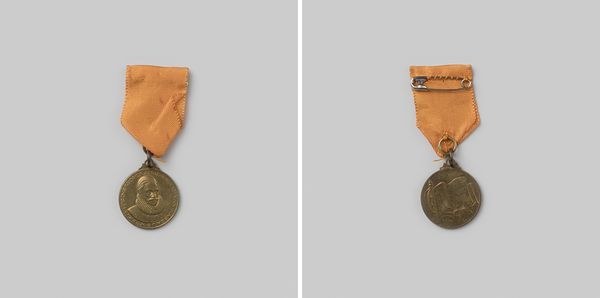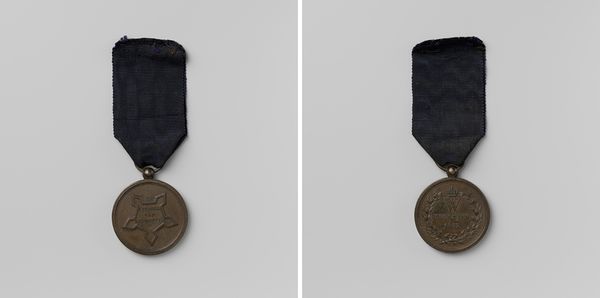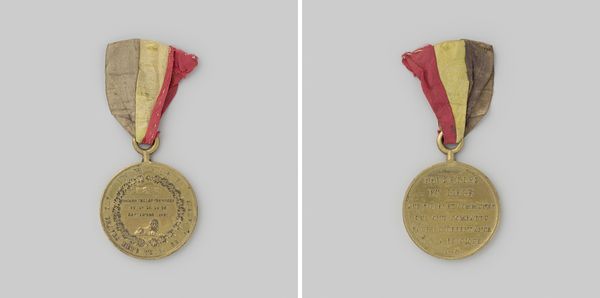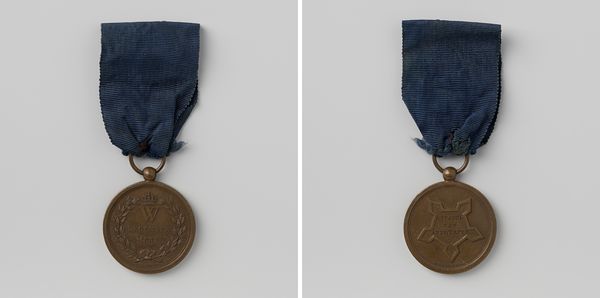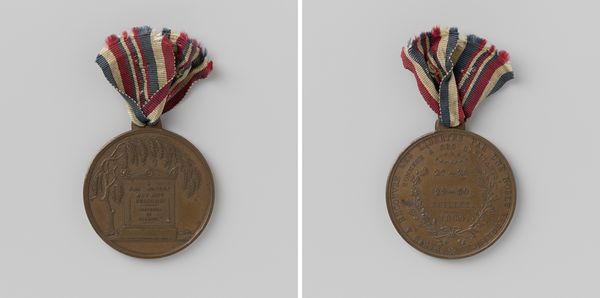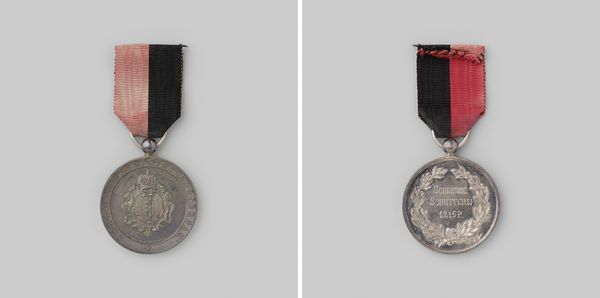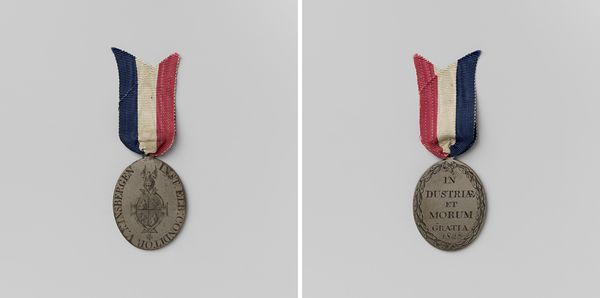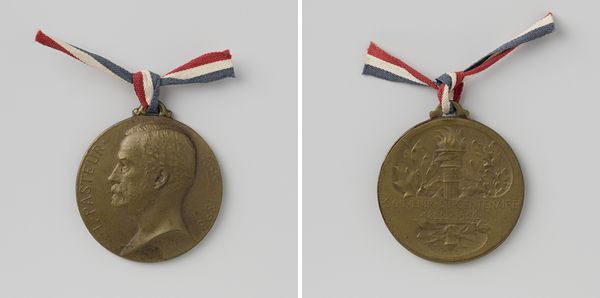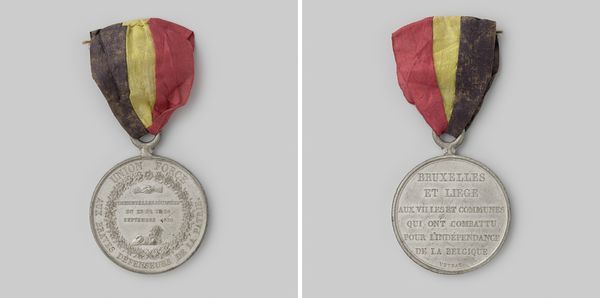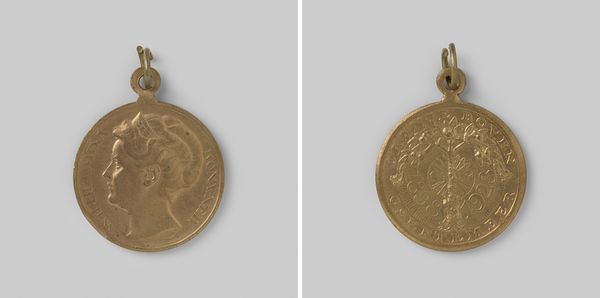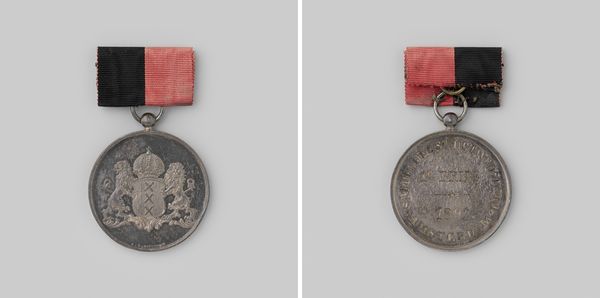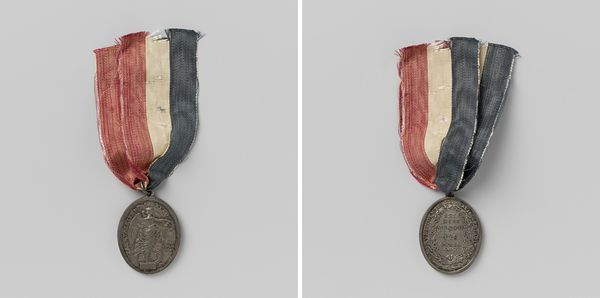
Vijfentwintigste verjaardag van Juliana, prinses der Nederlanden, penning uitgedeeld onder schoolkinderen 1934
0:00
0:00
bronze, sculpture
#
portrait
#
bronze
#
sculpture
#
history-painting
#
academic-art
#
modernism
Dimensions: diameter 2.9 cm, diameter 2.5 cm, weight 8.29 gr
Copyright: Rijks Museum: Open Domain
Curator: This bronze medal, created by Jacob Jan van Goor in 1934, commemorates the twenty-fifth birthday of Princess Juliana of the Netherlands. It was distributed to schoolchildren at the time. What do you make of it? Editor: It’s small, surprisingly intimate. The texture of the bronze is appealingly rough, contrasting with the clean lines of Juliana’s profile. It makes me consider what materials were widely available and how they were manufactured. It has an old feeling, perhaps worn bronze, although perhaps not aged quite perfectly. Curator: It’s interesting that you notice that imperfection. In its original context, this medal was about more than just individual craft. Its mass production and distribution reinforced a sense of national identity and loyalty to the monarchy, an effort to bolster popular support during a difficult time. Editor: Exactly. Think about the labor involved in creating thousands of these medals! And the symbolic act of handing them out. Consider also the orange-colored ribbon above, it is being held together by a safety pin! Does this make it seem well worn from age, but what was the significance of bronze during that period, especially for something like a commemorative object? Curator: Bronze, a traditional material for sculpture and commemoration, connected the monarchy to historical precedents. This medal serves a public role. It wasn't necessarily intended to have a unique emotional experience from each citizen. These tokens acted as reminders of royal presence within individual lives. Editor: You know, the way the princess is depicted reminds me of the industrial aesthetic that emerged during the Modernism art era, it adds an appealing utilitarian value to this medal. But, I find myself wondering how many of these survived? What kind of preservation methods are suitable to best maintain and preserve these metals? Curator: Absolutely. These objects, beyond their inherent materiality, also function as historical documents, reflecting a specific socio-political climate. Editor: Seeing the ribbon pinned so that a child can wear the badge suggests how this sort of royal celebration created a unique community and shared moment through something small made and presented to them. It’s really thought provoking when considered that way. Curator: I agree. It speaks volumes about how a seemingly simple object can encapsulate layers of meaning.
Comments
No comments
Be the first to comment and join the conversation on the ultimate creative platform.
